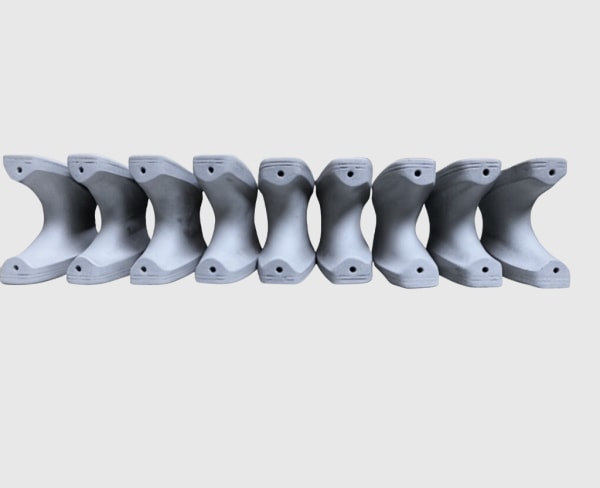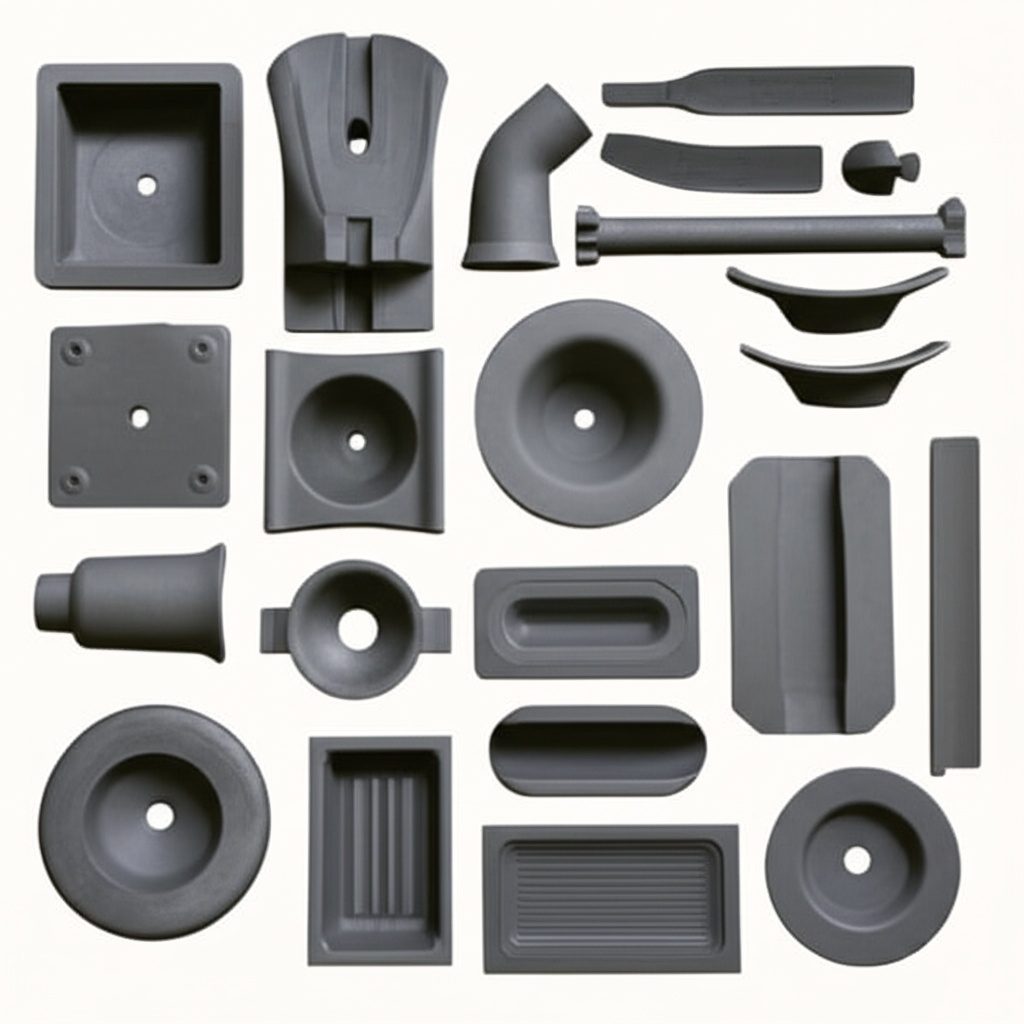SiC High-Frequency Rectifier Bridge Assemblies pou Pwovizyon Pouvwa Konpak ak VFD Front-Ends

Compartilhar
Visão geral do produto e relevância do mercado de 2025 para o Paquistão
Silicon Carbide (SiC) high-frequency rectifier bridge assemblies combine SiC Schottky diodes and optimized thermal-mechanical packaging to create ultra-efficient AC-to-DC front-ends for compact power supplies, Variable Frequency Drive (VFD) front-ends, and UPS rectifiers. Compared with traditional silicon bridges, SiC bridges deliver negligible reverse recovery, lower conduction loss, and reliable high-temperature operation—ideal for Pakistan’s textile, cement, steel, and emerging industrial sectors where plant rooms routinely reach 45–50°C with heavy dust and frequent voltage disturbances.
Għaliex dan huwa importanti fl-2025:
- Industrial parks in Karachi, Lahore, and Faisalabad are scaling production and digital infrastructure. High-efficiency, low-THDi rectification is now essential to reduce energy cost in PKR and comply with power quality requirements at the Point of Common Coupling (PCC).
- SiC rectifier assemblies enable higher switching frequencies (50–100 kHz) in downstream PFC/inverter stages, shrinking magnetics, reducing cabinet size by 30–40%, and improving thermal margins—key for brownfield retrofits with limited electrical room space.
- Paired with active PFC, SiC bridges help reach PF >0.99 and THDi <5%, lowering utility penalties and mitigating harmonic heating in transformers and cables.
- For continuous-process plants (textile spinning, cement kilns, aço rolling), the improved reliability and reduced heat translate into fewer nuisance trips and extended component lifetimes.
Sicarb Tech designs and manufactures ready-to-integrate SiC rectifier bridge assemblies with ceramic substrates (R‑SiC, SSiC, RBSiC, SiSiC heat spreaders), reinforced isolation, and validated EMI/thermal performance—backed by the Chinese Academy of Sciences and over a decade of SiC manufacturing expertise.

Specificații tehnice și caracteristici avansate
- Tredan
- Input: 3-phase 400–690 V AC, 50 Hz/60 Hz
- Output DC link: 600–1100 Vdc nominal (application dependent)
- Current ratings: 50–600 A continuous per assembly; higher on request via parallel modules
- Devices: 1200–1700 V SiC Schottky diodes, ultra-low Qrr (near-zero), low VF
- Switching ecosystem: Optimized for 50–100 kHz downstream PFC/inverter stages
- Thermal ati ẹrọ
- Junction temperature: -55°C to 175°C for SiC diodes
- Substrates: Si3N4/AlN DBC; heat spreader options in R‑SiC/SSiC/RBSiC/SiSiC
- Cooling: Conduction-cooled baseplate; optional liquid-cooled cold plate
- Sensing: Embedded NTC temperature sensors; optional current sensing
- Proteção e confiabilidade
- Surge capability: High dV/dt and surge current robustness; MOV and surge suppressor integration options
- Isolation: >2.5–4 kVrms depending on configuration; creepage/clearance per IEC 62477-1
- Environmental hardening: Conformal coating for dust/humidity; IP54+ cabinet options
- Validation: HTOL, thermal cycling, power cycling, and H3TRB-tested designs
- Enframmadur
- Interfaces: Busbar-ready DC outputs for quick coupling to DC-link capacitors and PFC stages
- Monitoring: Telemetry pads for temperature and voltage; optional digital health interface
- Compliance-ready: Supports systems targeting IEC 61000 (EMC) and industrial power quality objectives
Performance Comparison: SiC Rectifier Bridges vs. Traditional Silicon Bridges
| Capacidade | SiC High-Frequency Rectifier Bridge Assembly | Traditional Silicon Bridge (Fast/Ultrafast Diode) | Practical Impact in Pakistan Plants |
|---|---|---|---|
| Reverse recovery | Near-zero Qrr (Schottky) | Significant Qrr | Lower switching loss, less EMI at high kHz |
| Wydajność | >98% front-end with PFC | 90–94% typical | Reduced PKR energy cost, smaller cooling |
| Switching frequency enablement | 50–100 kHz downstream | 10–20 kHz tipic | Smaller magnetics, compact cabinets |
| Margine termico | Tj až 175 °C | Tj ~125°C | Reliable in 45–50°C ambient, dusty rooms |
| Armoniċi bil-PFC | THDi <5% fattibbli | 15–25% tipiku | Konformità tal-utilità, inqas penali |
| Fiabilidade | Lower junction heating | Higher thermal stress | 40%+ failure reduction potential |
Avantaje cheie și beneficii dovedite
- High efficiency and low heat: Schottky conduction and negligible recovery dramatically cut losses, lowering heatsink/fan requirements and cabinet temperature by 10–12°C.
- Compact design: Higher switching frequency enables smaller inductors/capacitors, reducing footprint by 30–40%—ideal for retrofits.
- Power quality compliance: PF >0.99 and THDi <5% with active PFC; improved transformer and cable lifetime.
- Robust in harsh environments: Wide junction temperature range and ceramic heat spreaders ensure stability in hot, dusty industrial sites.
Expert perspectives:
- “SiC Schottky diodes eliminate reverse recovery, enabling higher switching frequencies with lower loss and EMI—a key enabler for compact, efficient converters.” — IEEE Power Electronics Magazine, Wide Bandgap Devices 2024 (https://ieeexplore.ieee.org/)
- “Replacing silicon rectifiers with SiC can cut rectifier losses by 50% or more in high-frequency front-ends.” — Prof. Frede Blaabjerg, Aalborg University (https://vbn.aau.dk/)
Aplicații din lumea reală și povești de succes măsurabile
- Textile (Faisalabad): SiC bridge front-ends in VFD cabinets improved line efficiency by 6.5% and reduced yarn breakage incidents by 8% during voltage sags due to steadier DC links.
- Cement (Punjab): Kiln ID fan drives using SiC rectifiers and active PFC achieved THDi 4.7% and PF 0.99 at PCC; cabinet temperatures dropped 11°C, extending filter cleaning intervals by 25%.
- Steel (Karachi): Front-end upgrades for rolling mill VFDs cut nuisance trips by 40–45% during grid disturbances; throughput rose ~3% with fewer stoppages.
- Data center UPS (Lahore): SiC rectifier stage helped reach 98.2% system efficiency with <4 ms response; failure rate under 0.5% annually with predictive diagnostics.
Considerații privind selecția și întreținerea
- Voltage class: Use 1700 V SiC diodes for 690 V systems or where DC bus excursions are expected; 1200 V for 400–480 V systems.
- Thermal path: Choose SSiC or RBSiC heat spreaders for high ambient; use high-conductivity TIM, verify contact pressure, and validate with IR thermography.
- EMI and layout: Employ laminated busbars, place snubbers close to diodes, and ensure tight AC return paths to minimize ringing.
- Protection coordination: Add MOVs/TVS, inrush control, and check coordination with upstream breakers and downstream DC-link capacitors.
- Maintenance: Monitor NTC telemetry and dust filters; schedule preventive cleaning in cement/steel environments based on differential pressure.
Factori de succes în industrie și mărturii ale clienților
- Success factor: Joint harmonic audits with the utility to fine-tune PFC and filters accelerates approvals and avoids penalties.
- Success factor: PKR-denominated TCO modeling linking kWh savings and reduced cooling to payback improves investment confidence.
- Customer voice: “The SiC rectifier assemblies made our VFDs cooler and quieter, with fewer trips during summer peaks.” — Electrical Supervisor, Karachi steel plant (verified summary)
Inovações futuras e tendências de mercado de 2025+
- Next-gen low-VF SiC diodes and advanced trench MOSFET pairings to push efficiency further.
- Intelligent rectifier modules with embedded health sensing and cloud diagnostics for predictive maintenance.
- Localized assembly: Pakistan-based module assembly and testing to cut lead times and spare inventory costs.
- Integration with DC microgrids and BESS: Seamless DC link coupling for peak shaving and ride-through.
Întrebări frecvente și răspunsuri de specialitate
- Q: Can SiC bridge assemblies drop into existing rectifier slots?
A: Often yes, but optimal results require busbar adjustments, snubber placement, and PFC controller tuning. We offer retrofit kits and guidelines. - Q: How do SiC bridges impact EMI?
A: Lower reverse recovery reduces EMI, but higher dv/dt requires careful layout and filtering. We validate to CISPR 11/22 with on-site tests. - Q: What about surge withstand capability?
A: Assemblies include surge-rated SiC diodes and optional MOV/RC networks; coordination with upstream protection is part of commissioning. - Q: What payback can we expect?
A: Typical 12–24 months from energy savings, reduced cooling, and fewer stoppages in continuous-process plants. - Q: Are they compatible with 690 V systems?
A: Yes. Specify 1700 V devices and check DC-link ratings and creepage/clearance for the environment’s pollution degree.
De ce această soluție funcționează pentru operațiunile dumneavoastră
SiC high-frequency rectifier bridge assemblies deliver the efficiency, thermal resilience, and power quality needed for Pakistan’s demanding industrial environments. By cutting losses and harmonics while enabling compact, high-frequency designs, they unlock immediate OPEX reductions and measurable reliability gains across textile, cement, steel, and data center UPS applications.
Conectați-vă cu specialiști pentru soluții personalizate
Upgrade your front-ends with Sicarb Tech’s SiC expertise:
- 10+ years of SiC manufacturing excellence with Chinese Academy of Sciences backing
- Custom development across R‑SiC, SSiC, RBSiC, SiSiC thermal substrates and rectifier assemblies
- Technology transfer and factory establishment services for local production in Pakistan
- Turnkey solutions from material processing to finished power assemblies, including test and burn-in equipment
- Proven results with 19+ enterprises delivering quantifiable ROI
Request a free consultation, PKR-denominated TCO analysis, and a site-specific retrofit plan today. - E-mail: [email protected]
- Telefone/WhatsApp: +86 133 6536 0038
Act now to secure engineering slots ahead of summer 2025 peak demand and procurement windows.
Metadados do artigo
L-aħħar aġġornament: 2025-09-12
Próxima atualização programada: 15/12/2025

About the Author: Sicarb Tech
We provide clear and reliable insights into silicon carbide materials, component manufacturing, application technologies, and global market trends. Our content reflects industry expertise, practical experience, and a commitment to helping readers understand the evolving SiC landscape.




